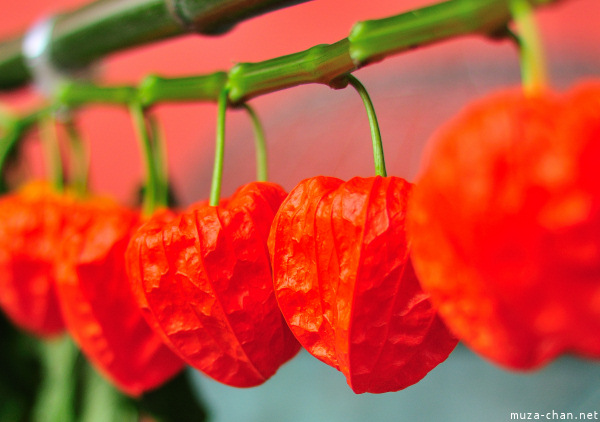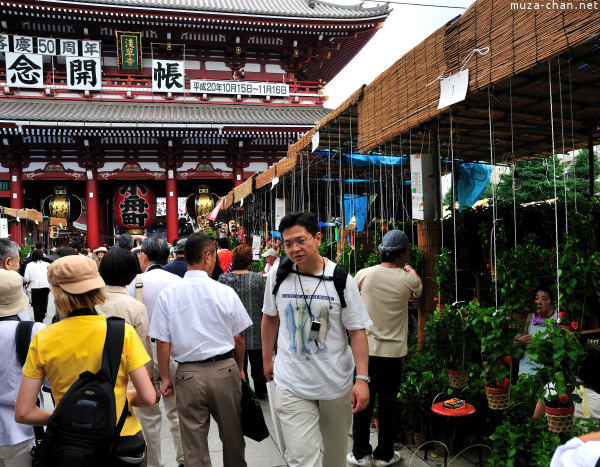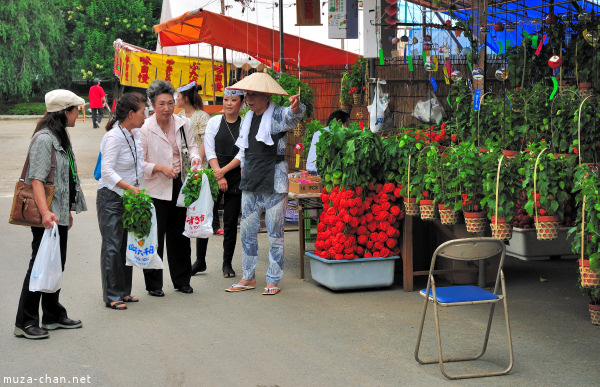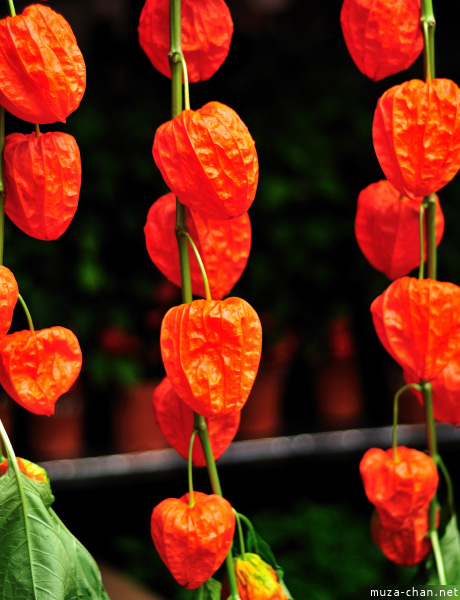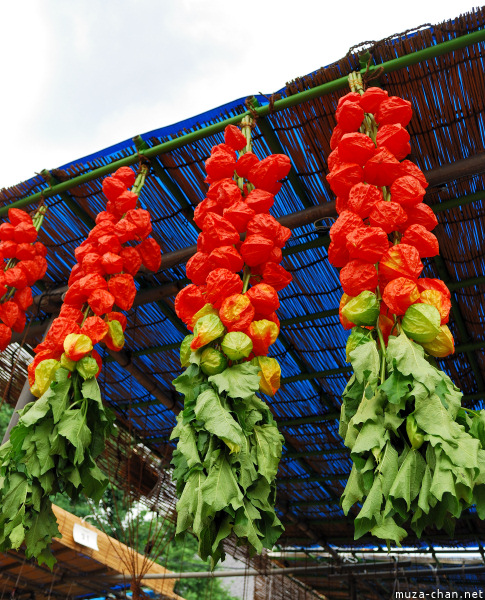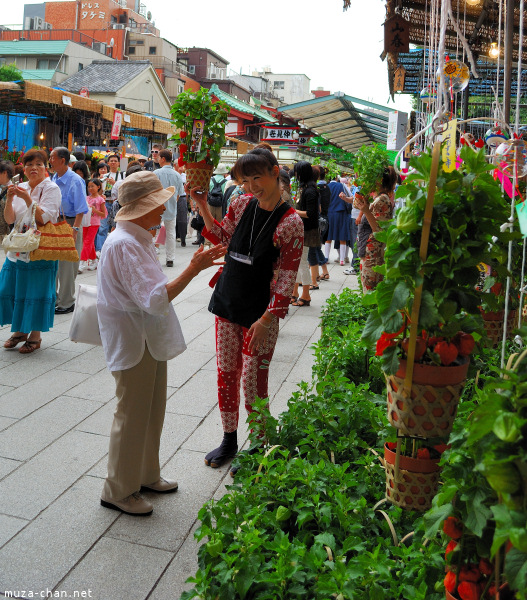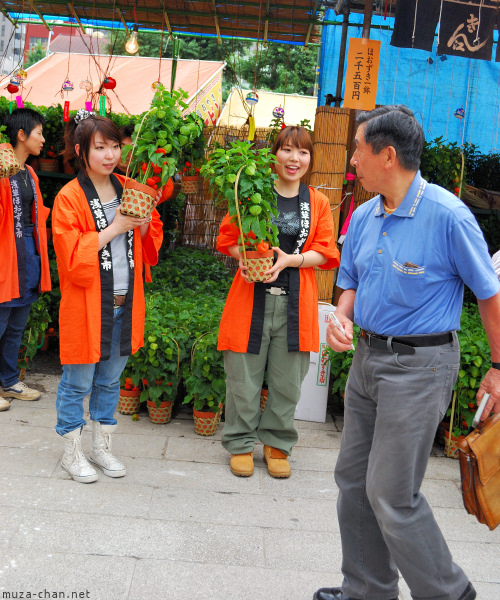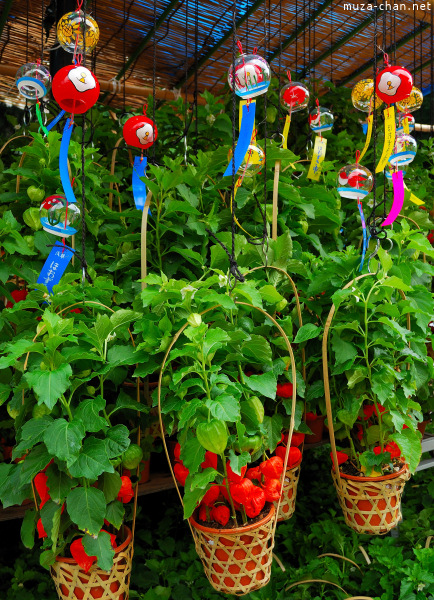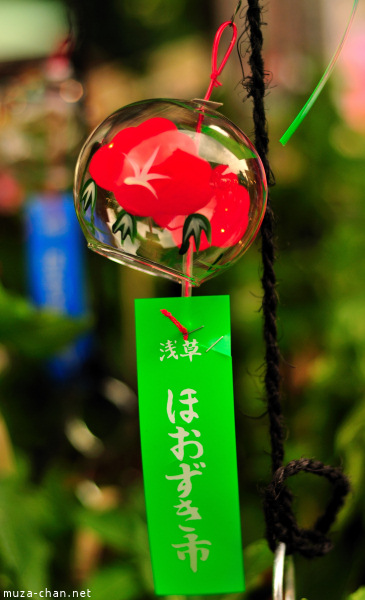Since the Edo period, the Hozuki Ichi (Chinese Lantern Plant Fair) is held on every year, on July 9th and 10th, at the Senso-ji Temple in Asakusa.
Hozuki it’s cultivated as an ornamental plant and as a medicinal herb, used by pregnant women to reduce fever and discomfort. The name comes from the shape and texture of the fruit, that looks like a small paper lantern.
Încă din perioada Edo, pe 9 şi 10 iulie, la templul Senso-ji din Asakusa are loc târgul de hozuki (Chinese lantern plant). Hozuki au fost cultivate atât ca plante medicinale, fiind folosite pentru scăderea febrei şi pentru scăderea disconfortului pentru femeile gravide, cât şi ca plante decorative. Numele vine de la forma şi textura fructelor, asemănătoare cu un mic felinar din hârtie.
Simultaneously, on July 10th, a special event takes place, Shiman-rokusen-nichi, The Day of 46,000 Blessings, based on the belief that a visit to the temple on this day gives worshipers the same benefit as 46,000 visits to the temple and the same number of lucky days.
The fair attracts hundreds of thousands of visitors each year, so to avoid the crowd and the heat, I went early in the morning (that’s me, in yellow… ;)).
In the temples courtyard, the stalls were already arranged, waiting for the visitors:
Some were just making finishing touches:
You could’ve choose between pots and branches with flowers:
I couldn’t carry a pot on the plane, so only bought one branch.
The visitors were walking between the stalls, comparing the merchandise. Since the plants were almost identical, I didn’t saw any major differences in price.
I liked the sellers, standing in front of the stalls, holding pots, trying to convince the passers-by…
…but some visitors couldn’t be convinced, not even by beautiful girls:
For me, the main attraction were the glass bells, furin, that in the breeze makes joyful sounds.
I photographed a few, under the smiling supervision of the sellers.
Similar article: Iriya Asagao Ichi (Morning Glory Fair)
În paralel cu târgul, pe 10 iulie are loc o sărbătoare specială, Shiman-rokusen-nichi (Day of 46.000 Blessings), sărbătoare care se bazează pe credinţa că o vizită la templu în această zi este echivalentă cu 46.000 de vizite în altă perioadă, aducând tot atâtea zile de noroc.
Târgul atrage sute de mii de vizitatori în fiecare an, aşa că pentru a evita aglomeraţia şi căldura, m-am dus de dimineaţă (cea cu tricou galben ;))
În curtea templului, vânzătorii cu tarabele deja aranjate îşi aşteptau cumpărătorii.
Se mai făceau doar ultimele retuşuri…
Puteai alege între ghivece cu flori şi ramuri înflorite.
Nu puteam transporta un ghiveci în avion, aşa că mi-am luat doar o ramură. Am ţinut-o ca amintire în balcon până la începutul primăverii, când şi-a schimbat culoarea.
Vizitatorii se plimbau printre tarabe, comparând marfa. Dat fiind că era aceeaşi plantă, eu n-am văzut diferenţe, decât foarte mici la preţ.
Cel mai mult mi-au plăcut vânzătorii, care stăteau în faţa tarabelor, unii cu ghivecele în braţe, încercând să convingă trecătorii să cumpere de la ei.
Unii vizitatori treceau însă nepăsători, nu puteau fi convinşi nici măcar de două fete frumoase.
Principala atracţie pentru mine au fost clopoţeii din sticlă, furin, care scoteau sunete vesele la adierea vântului.
Am fotografiat câţiva, sub privirile prietenoase ale vânzătorilor.
Pe aceeaşi temă: Târgul de zorele de la templul Iriya Kishimojin
